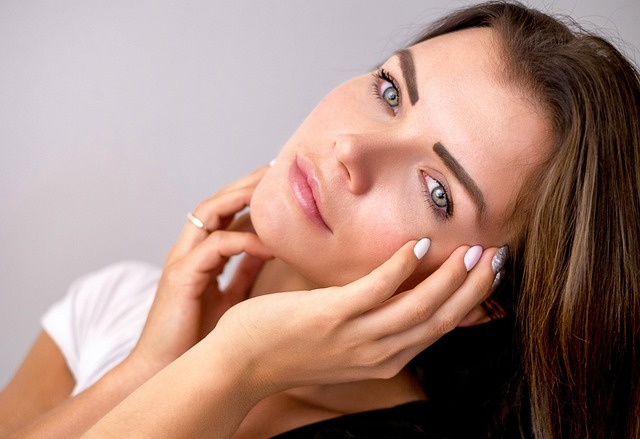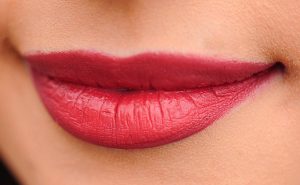RF Skin Resurfacing is a non-invasive cosmetic procedure using radiofrequency technology to combat signs of aging, such as wrinkles, fine lines, and age spots. It stimulates collagen production, improves skin texture, and enhances elasticity without downtime or significant discomfort. This method is suitable for individuals with moderate to severe facial, neck, or hand wrinkles, offering effective wrinkle reduction and smoother skin after just one session, with optimal results from multiple treatments combined with proper post-care routines. Safety considerations include temporary redness, swelling, and peeling, emphasizing the importance of consulting a qualified dermatologist for personalized guidance.
Skin aging is an inevitable process, leading to wrinkles and skin laxity. For those seeking effective anti-aging solutions, RF (Radiofrequency) skin resurfacing has emerged as a popular and non-invasive procedure. This advanced technology stimulates collagen production and tightens skin by heating the dermis.
In this comprehensive guide, we’ll explore RF skin resurfacing, from understanding its mechanism to its numerous benefits, procedure details, potential risks, candidate eligibility, post-treatment care, and maintaining results.
Understanding Skin Aging and Wrinkles

Skin aging is a natural process that begins early in our lives, with the first visible signs often appearing in our late 20s and 30s. As we age, our skin undergoes several changes, primarily due to a combination of intrinsic and extrinsic factors. Intrinsic aging refers to the inevitable cellular changes that occur over time, while extrinsic aging is influenced by environmental conditions such as sun exposure, pollution, and lifestyle choices. These factors contribute to the formation of wrinkles, fine lines, and age spots, which are often considered the most visible indicators of skin aging.
RF (Radio Frequency) Skin Resurfacing is a non-invasive aesthetic procedure that addresses these signs of aging by stimulating collagen production and remodeling. As we grow older, our skin’s natural collagen network breaks down, leading to reduced elasticity and a loss of facial definition. RF technology uses controlled radio frequency energy to heat the deeper layers of the skin, triggering a natural healing response. This process promotes the formation of new, healthy collagen fibers, resulting in improved skin texture, reduced wrinkles, and a more youthful appearance.
Introduction to RF Skin Resurfacing

Radiofrequency (RF) skin resurfacing is a non-invasive cosmetic procedure that uses targeted heat energy to stimulate collagen production and improve skin texture. Unlike traditional ablative methods, RF treatments preserve the outer layer of skin, minimizing downtime and discomfort. This advanced technology offers a game-changing approach to wrinkle reduction, providing long-lasting results without the need for extensive surgery.
During an RF skin resurfacing session, fine needles emit radiofrequency energy into the skin, heating the deeper layers while protecting the surface. This controlled heat prompts the body’s natural healing response, encouraging the growth of new, healthy collagen fibers. The result is a smoother, more youthful-looking complexion with reduced fine lines and wrinkles. RF skin resurfacing is a safe and effective option for those seeking a non-surgical alternative to traditional face lifts.
How Does RF Technology Work?

Radiofrequency (RF) technology is a game-changer in skin resurfacing treatments, offering a non-invasive approach to wrinkle reduction and skin tightening. It works by emitting safe, targeted radio waves that penetrate deep into the dermis, stimulating collagen production and enhancing elasticity. This process is known as thermo-coagulation, where controlled heat is used to create tiny lesions in the skin, triggering the body’s natural healing response.
As a result, RF Skin Resurfacing promotes the growth of new, healthy collagen fibres, which fill in fine lines and wrinkles, improving overall skin texture and appearance. This technology also helps to tighten loose or saggy skin by warming the deeper layers, leading to a more youthful and revitalised complexion.
Benefits of Radiofrequency (RF) Skin Resurfacing

Radiofrequency (RF) skin resurfacing offers a non-invasive approach to wrinkle reduction, providing multiple benefits for those seeking youthful-looking skin. This advanced technology utilizes targeted heat energy to stimulate collagen production and improve skin texture. By gently remodeling the dermal layer, RF treatments can reduce fine lines and wrinkles, enhance skin elasticity, and promote a smoother, more radiant complexion.
One of the key advantages of RF skin resurfacing is its ability to safely and effectively target specific areas of concern. It can precisely deliver heat to the deeper layers of the skin without causing significant discomfort or downtime. This allows for targeted wrinkle reduction, making it an excellent choice for fine lines around the eyes, mouth, and forehead. Additionally, RF treatments can improve overall skin tone, texture, and tightness, leading to a more youthful and rejuvenated appearance.
The Procedure: Step-by-Step Guide

Skin Resurfacing for Wrinkle Reduction: The Procedure — Step-by-Step Guide
RF (Radio Frequency) Skin Resurfacing is a non-invasive aesthetic treatment that leverages advanced technology to stimulate collagen production and rejuvenate the skin. The process begins with a thorough cleansing of the treated area to ensure optimal conditions. A small, handheld device emitting radio frequency energy is then gently applied to the skin. This energy penetrates deep into the dermis layer, targeting specific tissues while minimizing surface damage.
As the RF waves heat the collagen and elastic fibers, they induce a controlled response in the skin, triggering the body’s natural healing process. The heated area causes micro-lesions, which stimulate fibroblasts to produce new collagen and elastin. After the treatment, the skin is gently cooled, and any redness or mild discomfort subsides quickly. This procedure can be effectively combined with other anti-aging treatments for enhanced results.
Safety and Potential Side Effects

Skin resurfacing procedures, including RF (Radio Frequency) Skin Resurfacing, have gained popularity for their ability to reduce wrinkles and improve skin texture. However, safety should always be a top priority when considering any cosmetic treatment. It’s crucial to understand that while these technologies offer promising results, they may not be suitable for everyone. Potential side effects include temporary redness, swelling, and discomfort in the treated areas. In some cases, patients might experience mild peeling or flaking of the skin.
As with any medical procedure, risks vary based on individual factors such as skin type, overall health, and specific treatment parameters. It’s essential to consult a qualified dermatologist who can assess your unique needs and provide guidance tailored to your circumstances. They will help determine if RF Skin Resurfacing is an appropriate choice, ensuring the best outcomes while minimising any adverse reactions.
Candidate Selection for RF Skin Resurfacing

Skin Resurfacing using Radio Frequency (RF) technology is a popular and effective treatment for wrinkle reduction, but it’s crucial to understand who this procedure is best suited for. Candidate selection plays a vital role in ensuring optimal results from RF Skin Resurfacing. This advanced technique targets deep layers of the skin, stimulating collagen production and improving skin elasticity. It’s ideal for individuals with moderate to severe wrinkles, especially those located on the face, neck, or hands.
During consultations, dermatologists consider various factors such as skin type, the severity of wrinkles, and overall skin health. Suitable candidates typically have healthy, well-maintained skin without active acne or certain skin conditions. It’s also essential that patients are committed to maintaining a consistent skincare routine post-treatment for best results.
Post-Treatment Care and Recovery

After undergoing RF Skin Resurfacing, proper post-treatment care is essential for optimal results and a smooth recovery process. It’s crucial to follow your dermatologist’s specific instructions regarding cleansing, moisturizing, and protecting the treated area from sun exposure. Avoiding harsh products and extreme temperatures (hot or cold) can help prevent irritation and promote healing.
During the recovery period, which typically lasts several days, you may experience redness, swelling, and mild discomfort. Over-the-counter pain relievers can aid in managing these symptoms. It’s important to avoid strenuous activities and excessive sweating for a few days to minimize potential complications. As your skin heals, gentle care will help ensure the best possible outcome, leaving your complexion smoother, more even, and with reduced wrinkle appearance.
Results Expectations and Maintenance

After undergoing RF Skin Resurfacing, patients can expect significant improvements in skin texture and the appearance of wrinkles. The procedure encourages collagen production, which helps to firm and smooth out fine lines and creases. Many see visible results after just one session, but for optimal outcomes, a series of treatments is typically recommended. Results may vary based on age, skin type, and lifestyle factors.
Maintaining the post-treatment results requires consistent skincare practices. Patients should continue using sunscreen daily to protect their skin from further sun damage, as UV exposure can accelerate aging. Additionally, incorporating regular exfoliation and hydration into their routines helps to optimize skin health and longevity of the resurfacing effects. Following these maintenance steps ensures that the skin remains revitalized and promotes a youthful appearance for an extended period.
